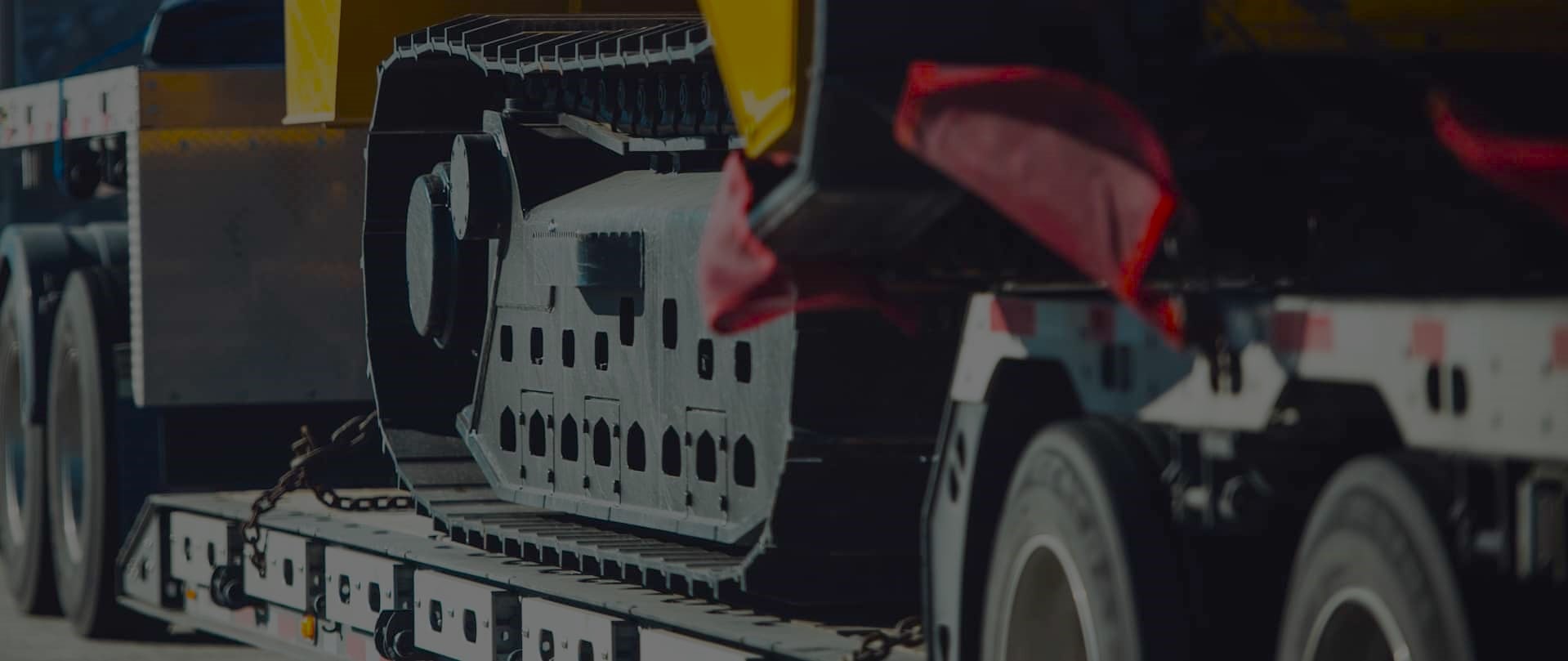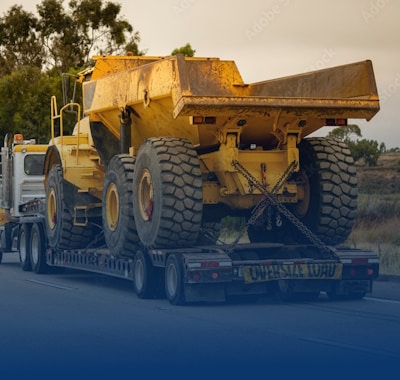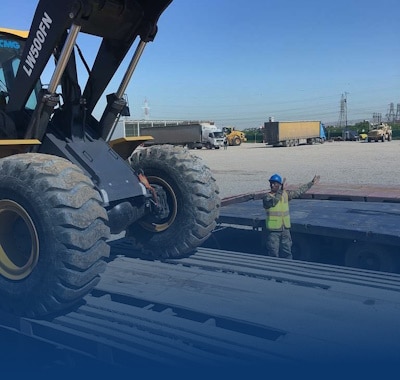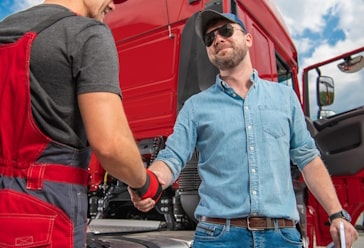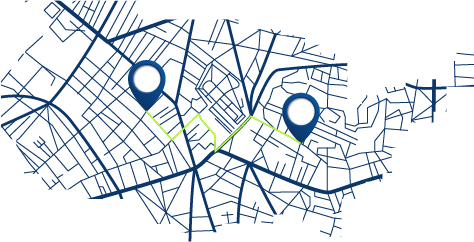Safely Transport Wind Turbine Parts with These Tips
Freedom Heavy Haul can offer expedited Pickup and Delivery for any size shipment anywhere in the USA. Contact us today for No Hassle, No Pressure Pricing.
When you think about moving wind turbine parts, safety and efficiency are key. The need for clean energy is growing fast. Wind turbines are a big part of this, and moving them right is crucial.
To move these parts well, you must plan well. You need to think about the challenges and the best ways to handle big, heavy items.
Knowing how to move wind turbine parts safely is very important. It helps make sure turbines work right and last long. Moving these parts needs special tools and a good plan to avoid damage.
By learning the best ways to move wind turbine parts, you can lower risks. This means your parts will get to where they need to go safely and on time.
Introduction to Wind Turbine Transportation
Wind turbine transport means moving big, heavy parts like blades and towers. It’s a job that needs careful planning and the right tools. This way, parts don’t get hurt on the way.
By using the best methods for moving wind turbines, you can keep parts safe. This helps avoid damage and keeps projects on schedule.
Key Takeaways
- Wind turbine transportation requires careful planning and specialized equipment
- Understanding wind turbine logistics is crucial for safe and efficient transport of components
- Learning how to transport wind turbine components safely and efficiently can minimize risks and reduce costs
- Wind turbine transportation involves the movement of large and heavy components, such as blades and towers
- Following best practices for wind turbine logistics can ensure that components arrive at their destination safely and on time
- Wind turbine transportation is a critical aspect of the wind energy industry, and safe and efficient transport of components is essential for successful installation and maintenance
Understanding Wind Turbine Transportation Challenges
Transporting wind turbine parts comes with many challenges. These challenges can affect the efficiency and safety of the transport. It’s important to plan carefully to ensure these large and heavy parts reach their destination safely.
When moving wind turbine parts, consider their size and weight. Also, think about any obstacles that might come up during transport. For instance, wind turbine blades can be up to 80 meters long and weigh tons. You can find more information on transporting these parts at freedomheavyhaul.com.
Size and Weight Considerations
The size and weight of wind turbine parts are major challenges. These parts need special equipment and careful handling to be moved safely and efficiently. When planning the transport route and choosing equipment, remember to consider the dimensions and weight of the parts.
Common Transportation Obstacles
There are also common obstacles to consider, like narrow roads and low bridges. Inclement weather can also pose a problem. These obstacles can affect the safety and efficiency of the transport. It’s crucial to plan ahead to avoid delays and risks. By understanding these challenges and taking steps to overcome them, you can ensure safe and efficient transport of wind turbine parts.
Essential Pre-Transport Planning Steps
When moving wind turbine components, planning is key. You need to check the route, pick the right gear, and get all permits ready. Good planning cuts down on delays, saves money, and keeps everything safe.
Handling the size and weight of these parts is a big challenge. For tips, check out a wind turbine equipment hauling service. Knowing these challenges helps you plan better for wind turbine shipping.
Important steps for planning include:
- Route assessment and planning
- Equipment selection and preparation
- Permit acquisition and documentation
By planning well, you can make sure the move is safe and goes smoothly.
Selecting the Right Transportation Equipment
Choosing the right equipment for wind turbine transport is key. You must think about the size and weight of the parts. Look for specialized trailers and vehicles that can handle these needs.
For more on wind turbine hauling, check out this article. The right gear can prevent damage or injury, making transport a success.
Specialized Trailers and Vehicles
Specialized trailers and vehicles are made for big and heavy wind turbine parts. They have hydraulic systems and customized trailers for safe transport. Pick equipment that fits your project’s needs, like the size and type of parts.
Loading and Securing Equipment
Securing the load is vital for wind turbine transport. Make sure the parts are tied down well to avoid damage. Use cranes and rigging systems for the heavy lifting.
How to Transport Wind Turbine Components Safely and Efficiently
Transporting wind turbine parts safely and efficiently is crucial. To ensure secure wind turbine component transportation, you must plan well. This includes securing parts properly, using the right tools, and following safety rules.
For efficient wind turbine transport, picking the right transport method and tools is key. This might include special trailers and vehicles, along with tools for loading and securing. By choosing the right tools and following best practices, you can reduce damage risks and ensure parts arrive safely and on time.
Some important things to think about for safe and efficient transport include:
- Proper loading and securing of components
- Use of specialized trailers and vehicles
- Adherence to safety protocols and regulations
- Regular maintenance of equipment and vehicles
By following these tips and taking a careful, planned approach to transport, you can ensure your components are moved safely and efficiently. This will help your wind energy project finish on time and within budget.
| Transportation Method | Advantages | Disadvantages |
|---|---|---|
| Specialized Trailers | Safe and secure transport, reduced risk of damage | Higher cost, requires specialized equipment |
| Standard Trailers | Lower cost, widely available | Increased risk of damage, may not be suitable for large components |
Route Planning and Survey Requirements
Planning a safe and efficient route for wind turbine transport is key. You must check bridges and roads to see if they can handle the weight and size of the parts. It’s also important to think about how the route affects the environment and local communities.
A good route plan can cut down on delays and costs. Make sure to check for overhead clearance and have backup plans for unexpected issues. This is very important for moving big parts like blades or towers.
Some important things to think about when planning a route include:
- Checking bridges and roads to make sure they’re strong enough
- Verifying overhead clearance to avoid accidents
- Having a backup plan to avoid delays and save money
By carefully planning the route and surveying the area, you can ensure the safe and efficient transport of wind turbine parts. This is crucial for the success of wind turbine projects.
Good route planning also means working with local authorities and stakeholders. This helps get the necessary permits and approvals. It ensures you follow the rules and avoid delays or accidents during transport.
Securing and Protecting Components During Transit
When it comes to secure wind turbine component transportation, every detail is important. You want your wind turbine components to arrive safely and on time. Securing and protecting them during transit is key.
Use tie-downs, straps, and other securing devices to keep them in place. Think about the wind turbine shipping method, whether land, sea, or air. For sea transport, extra care is needed to protect against weather and damage.
Here are some best practices for secure wind turbine component transportation:
- Use high-quality securing equipment that can withstand various weather conditions and external factors.
- Follow proper loading and securing procedures to prevent damage or loss during transit.
- Consider the mode of wind turbine shipping and plan according to ensure safe arrival.
By following these best practices and taking the necessary precautions, you can ensure that your wind turbine components are securely transported. They will arrive at their destination in good condition, ready for installation and operation.
Meeting Legal and Regulatory Requirements
Ensuring wind turbine transportation safety means following legal and regulatory rules. Moving wind turbine parts safely is more than just moving them. It’s about careful planning and detail.
You need the right permits and all documents ready before moving parts. This is key to safe and efficient transport.
For more information, check out reliable sources on hauling wind turbine equipment. They explain the challenges of moving heavy parts and why safe transport is crucial.
Permit Acquisition Process
Getting the right permits is a big step in safe transport. You must follow all rules and get the needed permits before moving parts. This includes permits for oversized loads and local authority permits.
Documentation Requirements
Having the right documents is key for safe transport. Make sure you have cargo insurance, customs clearance, and other important documents. This avoids delays and ensures safe transport.
Insurance Considerations
Insurance is vital for safe transport. You must think about the risks of moving heavy parts and have enough insurance. This includes liability, cargo, and other insurance types.
Cost Optimization Strategies
When it comes to transporting wind turbine parts, cutting costs is key. Plan your routes well, pick the right equipment, and manage resources smartly. This can greatly reduce expenses and boost efficiency.
Minimizing delays is crucial to avoid wasting money. Using fuel-efficient vehicles and smart load planning can also cut down on fuel use. Working with seasoned wind turbine logistics providers can uncover more ways to save. They ensure your parts are moved safely and efficiently.
